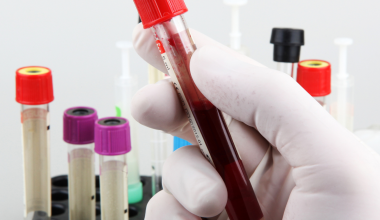With more than 6.5 million Canadians currently without a family doctor, and that number predicted to climb to 10 million by 2026, many people are scrambling to find solutions to their ongoing healthcare needs.
Regular access to a primary care practitioner is vital in preventing illness, managing chronic disease, accessing regular screenings, keeping prescriptions updated, helping with pre- and post-natal health, and addressing acute injury or illness.
One study shows that when patients have long term access (>15 yrs.) to a family doctor, there is a 30% reduction in walk-in clinic and hospital admission, and a 25% reduction in mortality compared with a patient who has had only 1 year of access to a family doctor.
One of the many interim solutions being thrown at this physician shortage crisis is the promotion of the Nurse Practitioner (NP).
What Care Do Nurse Practitioners Provide?
Nurse practitioners first appeared in Canada in the 1960s mainly to provide care in remote areas. By the 1970s, interest in the NP role increased and more education programs were introduced.
Today, Nurse Practitioners can take on much of the role of a family doctor, helping patients with preventive care, care for chronic diseases and access to specialists in the case of illness.
Just like family doctors, they provide primary patient care, ideally bringing a holistic overview to their relationship with their patients. Nurse practitioners place a significant focus on teaching patients about their health conditions and treatment recommendations.
They help with their patients’ needs relating to their physical and mental health. Specifically, NP’s can:
- Autonomously diagnose and treat illnesses.
- Order and interpret tests.
- Prescribe medications.
- Perform many medical procedures.
These highly trained medical professionals are quickly becoming an essential part of the fabric of our medical system and are touted to help alleviate the family doctor shortage.
But is it as simple as that?
The Difference Between MD’s and NP’s
Much of the difference between MD’s and RN’s comes down to education and clinical experience.
NP’s are not as educated as MD’s, but are not too far off. An NP must first become a registered nurse (RN) before earning a master’s in nursing and passing the nurse practitioner’s certification exam. They must also have full-time clinical experience as a registered nurse.
In contrast, family doctors must obtain their undergraduate degree, graduate from an accredited medical school, pass practical and written exams and complete residency training.
Doctors examine patients, order lab tests, and evaluate the physical and mental health of patients. They prescribe and administer medications and treatments, perform, and assist in surgeries and in delivering babies, and provide emergency care, acute care, vaccines, and pre-natal and post-natal care. They often work in their own practices, or within a healthcare organization.
NPs often work within teams of other health professionals such as physicians, mental health professionals, pharmacists, and social workers. In a growing number of cases, just as with doctors, they lead their own practices.
In complex cases, when things go beyond their knowledge or skill, nurse practitioners must consult and collaborate with physicians and other healthcare professionals. Their scope is still somewhat limited compared to a medical doctor.
Read More on The Health Insider



Current Coverage and Access to Nurse Practitioners Across Canada
As of March 2025, the availability and public funding of NP services vary across provinces and territories. In many regions, NPs work within publicly funded healthcare settings such as hospitals, community health centers, and family health teams, providing services covered under provincial health plans. However, the extent of their practice and the funding models can differ.
Upcoming Changes Effective April 1, 2026
A significant development is set to take place on April 1, 2026. Former Federal Health Minister Mark Holland announced on January 10th, 2025, that provincial and territorial health plans will begin covering primary care services provided by nurse practitioners, pharmacists, and midwives as of April 1, 2026. This policy change will allow these professionals to bill governments for medically necessary services, aiming to reduce financial barriers for patients and enhance access to primary care across the country.
Variations in Scope of Practice
It’s important to note that the scope of practice for NPs varies across provinces and territories. According to the Canadian Institute for Health Information (CIHI), there is notable variation in scopes of practice for NPs across Canada; differences exist in 30 of the 38 identified activities. Understanding these differences is crucial for effective health workforce planning and for patients seeking care.
Recommendations for Patients
Given these variations and the upcoming policy changes, patients seeking care from NPs should:
- Consult Local Health Authorities: Reach out to provincial or territorial health ministries or local health authorities to understand the current availability and coverage of NP services in their region.
- Stay Informed About Policy Changes: Be aware of the changes set to take effect on April 1, 2026, which aim to expand coverage for NP services across Canada.
- Verify Coverage Details: Before accessing services from an NP, confirm whether the specific services are covered under the current provincial or territorial health plan, especially during the transition period leading up to 2026.
In the interim, if you use an NP, you may still find yourself being directly invoiced for screenings and services that are in fact covered under provincial medicare. Make sure you know the costs before going in as private health insurance may cover the out-of-pocket costs.
Last update to this article: March 25, 2025
~ Read more from The Health Insider ~
- Top 5 Water Resistant Sunscreens for Summer 2025Whether you’re sweating or swimming, these water-resistant sunscreens have your back — literally. See which ones made our 2025 list.
- Cancer Patients Need a Navigator Now More Than Ever One doctor redesigned cancer care—not with a new drug, but with a nurse navigator. Survival rates changed overnight.
- Thinking of Going Private for a Surgical Procedure? Here Are Some ConsiderationsThink shorter wait times, likely better equipment and probably a private room. Due diligence still required.
The information provided on TheHealthInsider.ca is for educational purposes only and does not substitute for professional medical advice. TheHealthInsider.ca advises consulting a medical professional or healthcare provider when seeking medical advice, diagnoses, or treatment.














